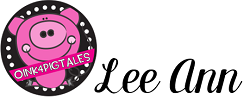In this blog I want to share with you about how and why you should be doing shared research activities in your classroom, give you some ideas, and share a few resources to help make it simple for you.
When I taught third grade my students loved doing shared research activities. But when I moved to kindergarten and found out I had to teach my students how to do this, I didn’t think it was possible much less going to fun Turns out I was wrong!
What is shared research?
Shared Research is where teachers often choose the topics, gather information, and guide their students by presenting all the facts and information. This is done in whole group instruction, small group instruction, and worked on over a period of a few days to a week. I began by sharing nonfiction pictures, books, and ask students questions based on the topic I’ve chosen. I choose the topic based on the standards I need to cover in science and social studies. Then, in our daily writing block time I can cover multiple standards.
Why is shared research important?
Shared research is a common core requirement and in states that don’t use common core, shared research is still a mandated standard.Research to Build and Present Knowledge:
CCSS.ELA-LITERACY.W.K.7 Participate in shared research and writing projects (e.g., explore a number of books by a favorite author and express opinions about them).CCSS.ELA-LITERACY.W.K.8 With guidance and support from adults, recall information from experiences or gather information from provided sources to answer a question.
Teaching primary students how to gather information from text or the internet and write about it must be taught, modeled for them, and done repeatedly.
Benefits of Shared Research
The biggest benefit of doing shared search as a teacher is it lets me integrate subjects. If you’ve read my blog post, you know I’m big on integrating subjects and using cross-curricular activities. At least once a month, my students and I do shared research activities. I have chosen the topic based on one of my nonfiction Read Aloud Units I know students love learning about penguins. I begin by getting them interested in the topic I have chosen by reading Tacky the Penguin by Helen Lester. I ask lots of questions to get their little minds thinking, show my students nonfiction photos of penguins, we will watch short videos on penguins, make penguin crafts, do how to procedural writings using transition words from the paper penguin they have created, and we talk about where penguins live and what it must be like to live in their habitat.You see, what I have done for this week was make learning fun, engaging, and actively involved my students. Now that they are loving penguins (I’ll hear about them for the next three months!) I am ready to begin presenting the facts and information I want them to use to do shared research. As you can see, I am able to integrate language arts, writing, science, and social studies just with this one topic. If I had to teach in subject blocks, I’d never be able to cover all the state mandated standards.
Using the Shared Research
Now that I have gathered all the information, I can have my students use it in multiple ways. We always use the information we have found to complete graphic organizers to copy with me facts we found in books I’ve read, found on the internet, or observed from the pictures I’ve shared with them. We sometimes make a class book where each students makes one page. Other times, I have them share an informational or opinion writing page that they work on throughout the week in small group writing time. Other times, they make interactive flip tab books where they draw, use inventive spelling, and write a word or couple of sentences summarizing what they have learned.
Getting students to focus on the key details they need to include requires lots of prompting on my part and presenting the information in small chunks for them. I want them to understand that penguins are birds, know where they live, they cannot fly, and their life cycle. So each day I take being with reintroducing them to that fact. I ask them lots of questions about what they think, what makes them think that, and many times they end up generating new ideas for us to continue to do adding to our shared research writing. I always write what students answers down on chart paper and use illustrations to help them easily refer to it throughout the week. No matter what grade you are teaching, it is important to teach the writing process, model how to write a word, space between words, use capital letters, end marks, and the editing process. These are the things we can do to get students comfortable writing.







